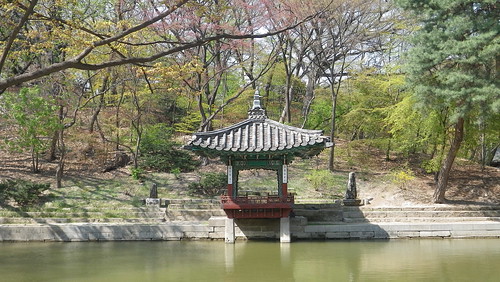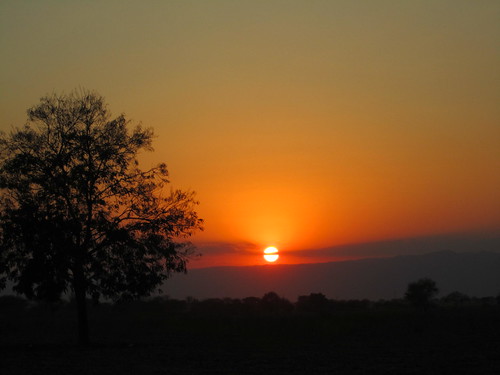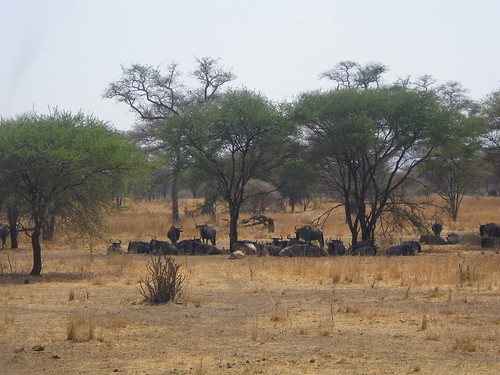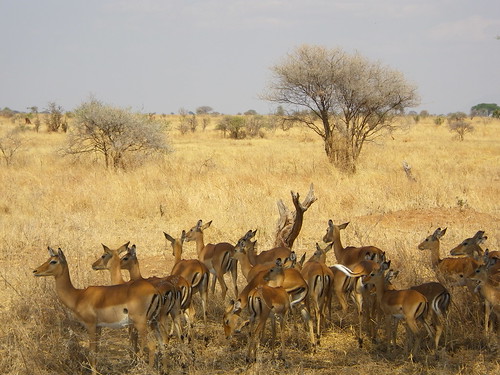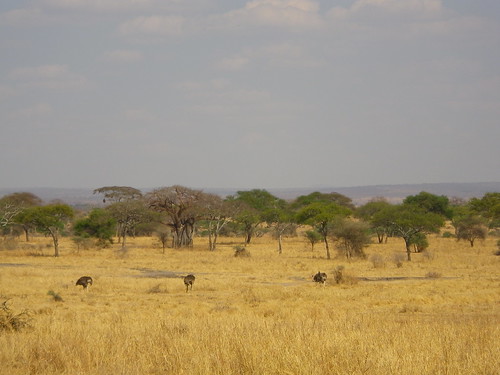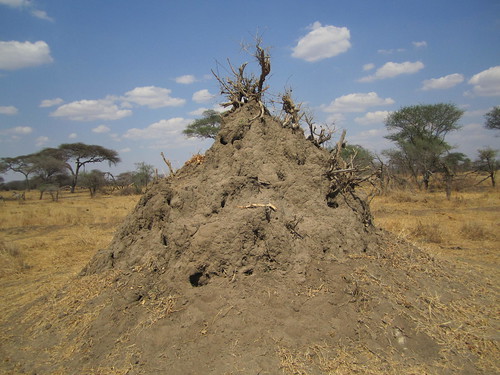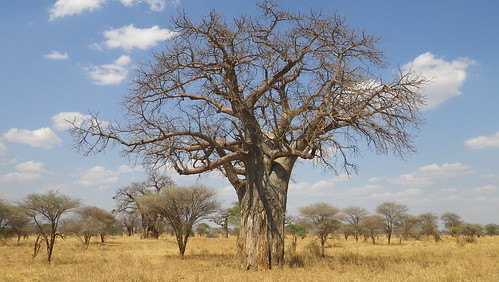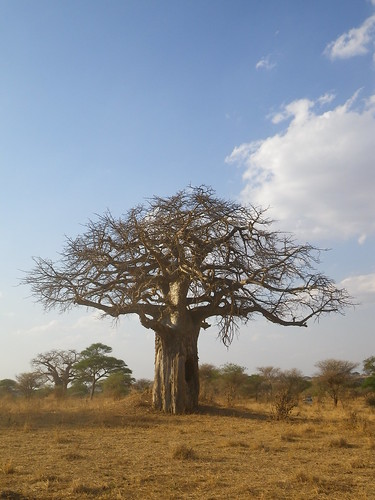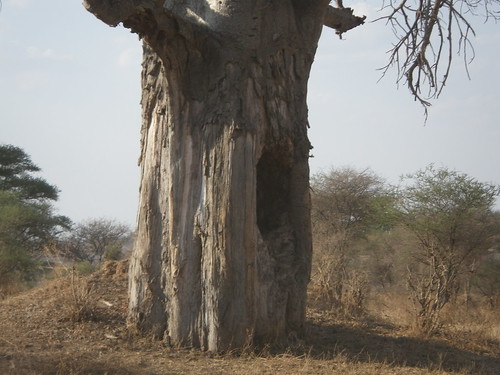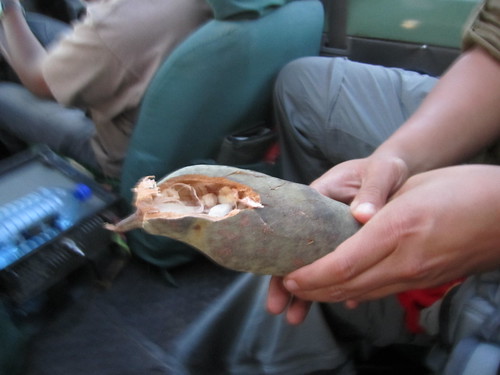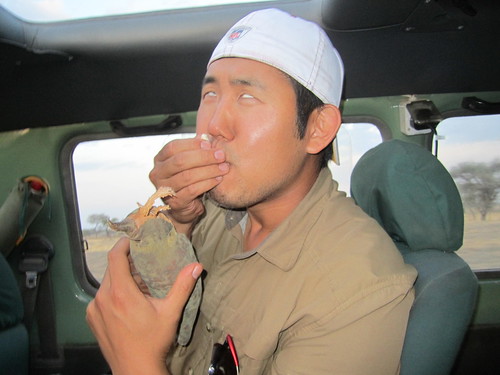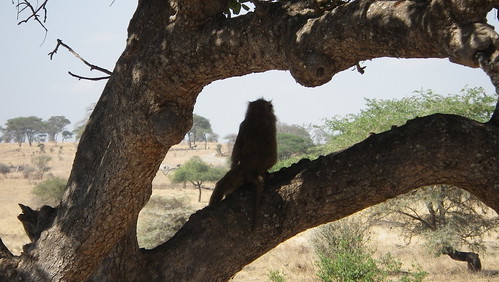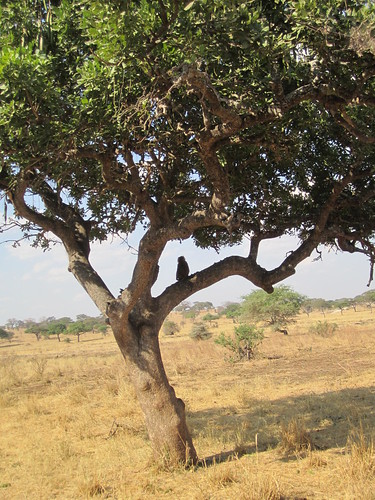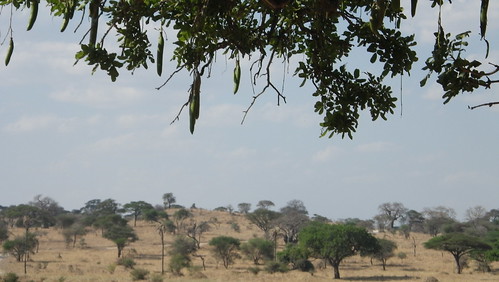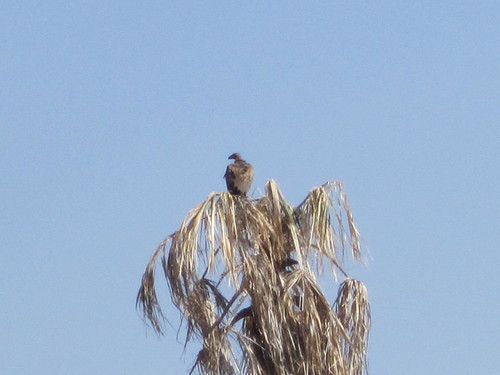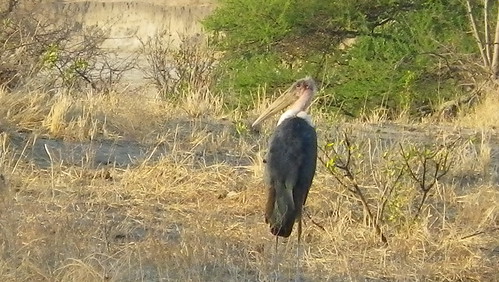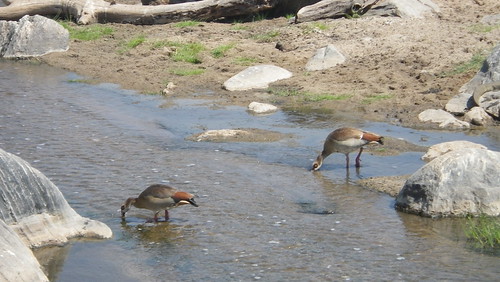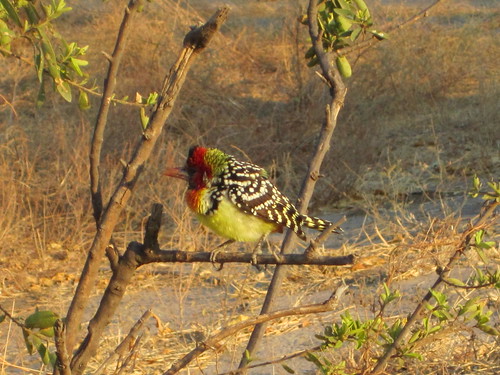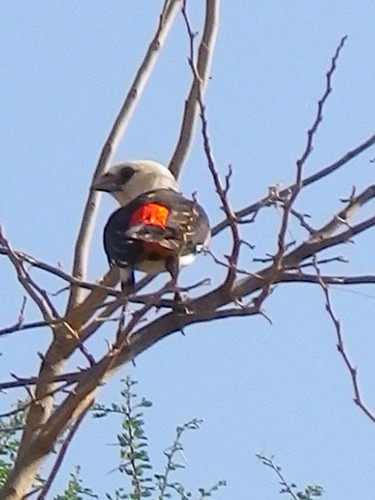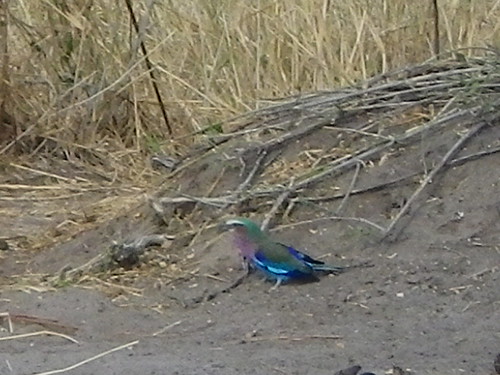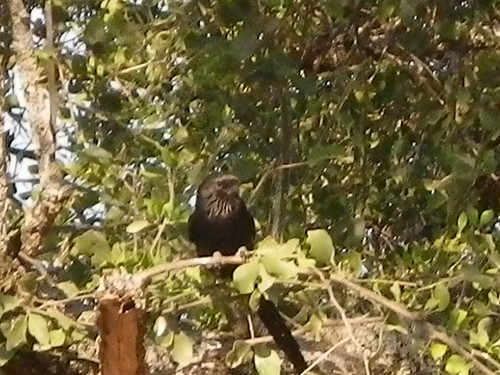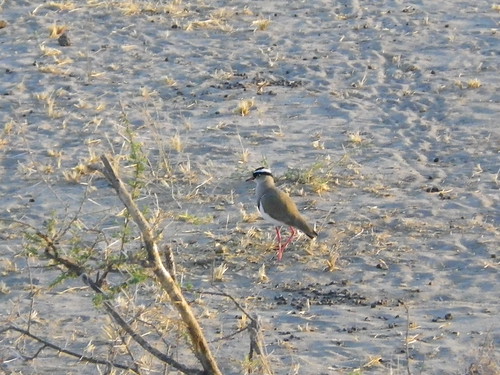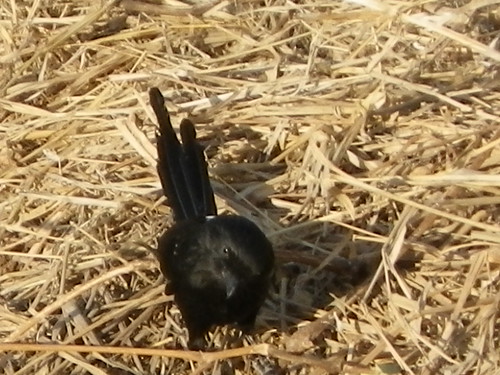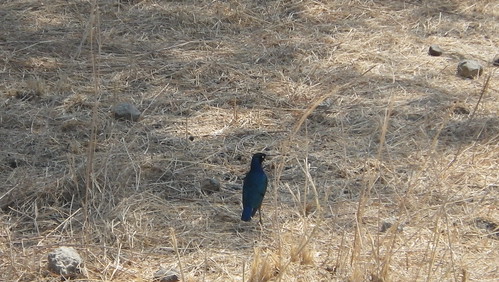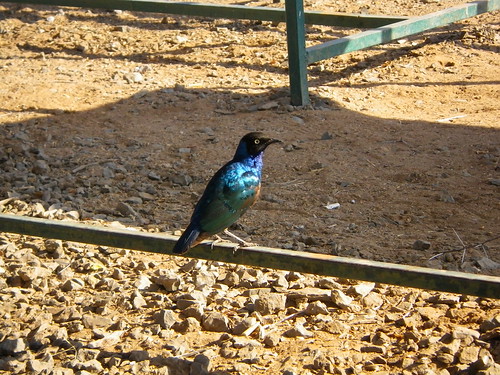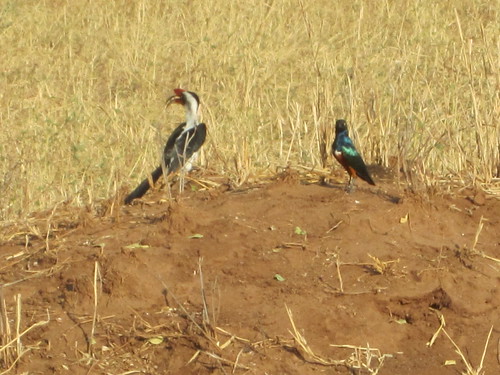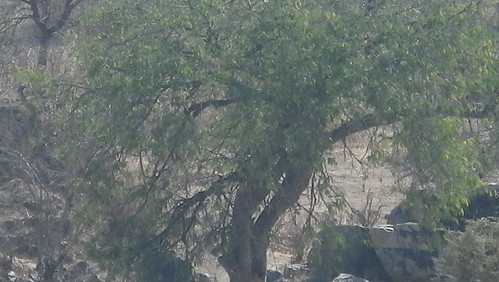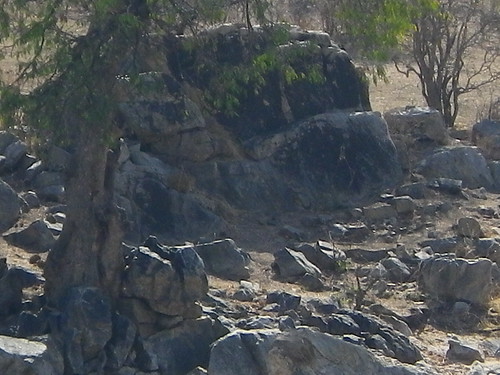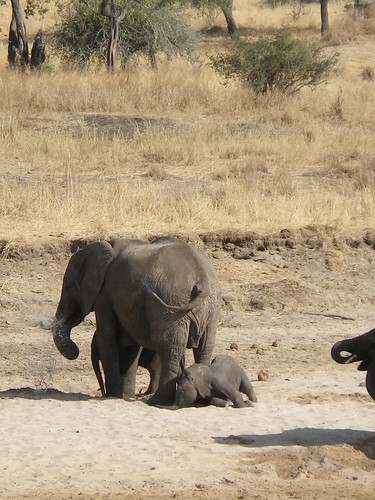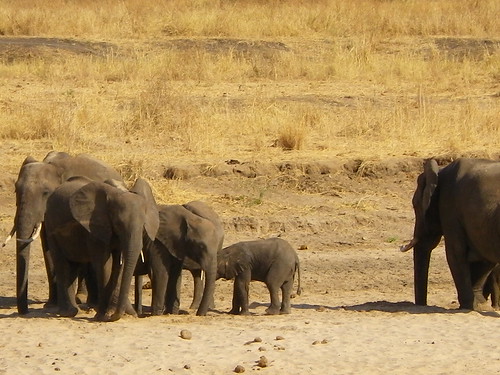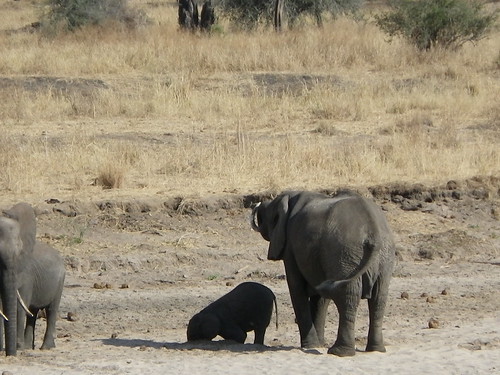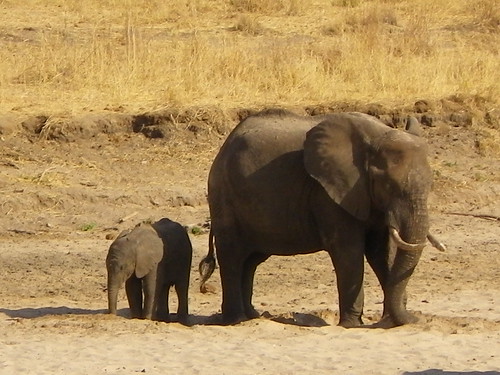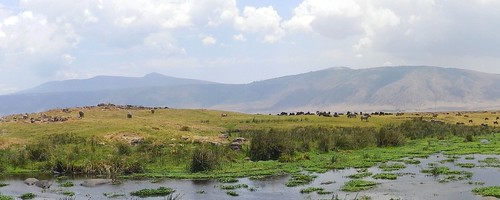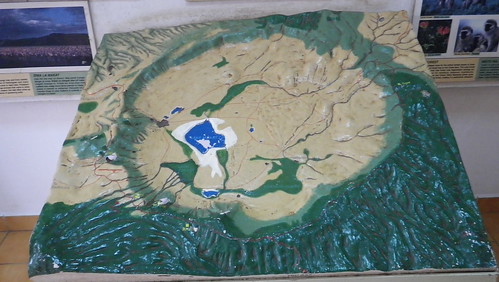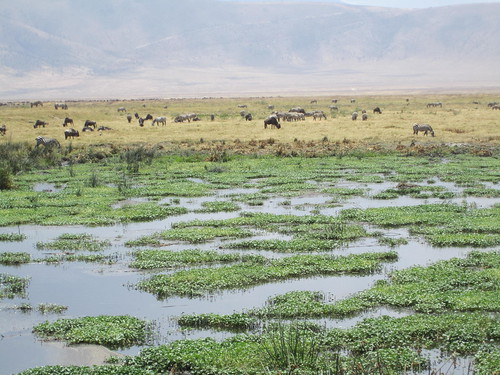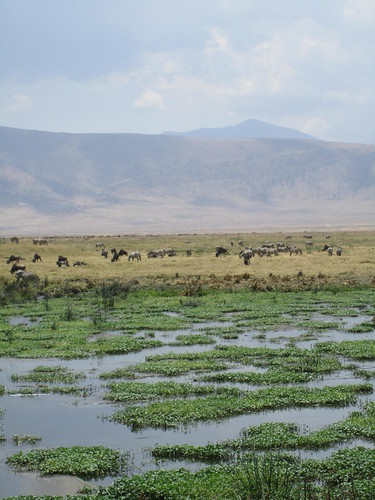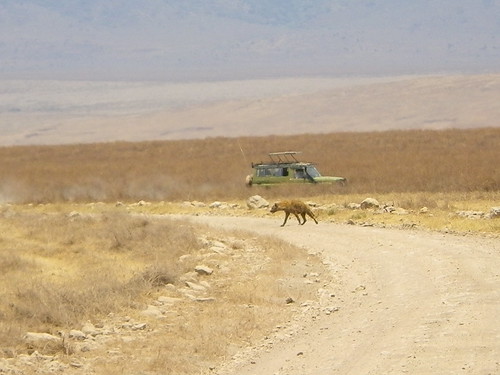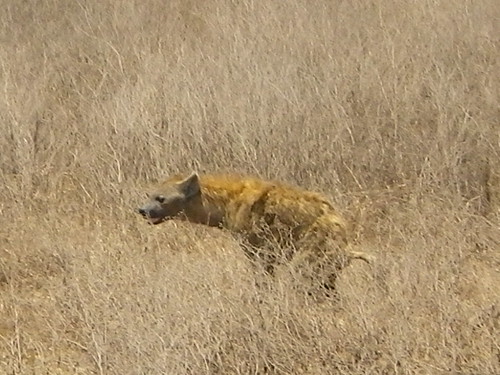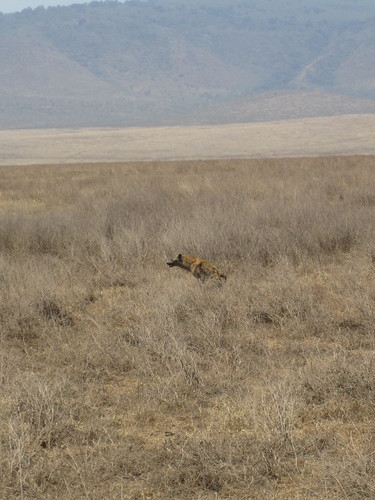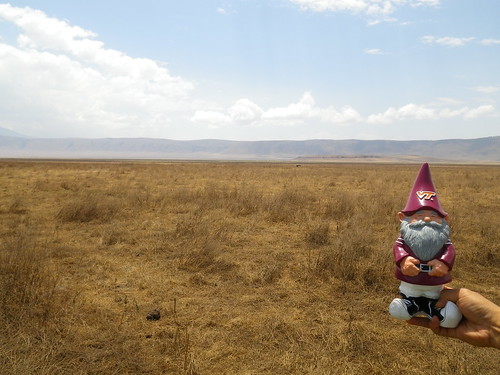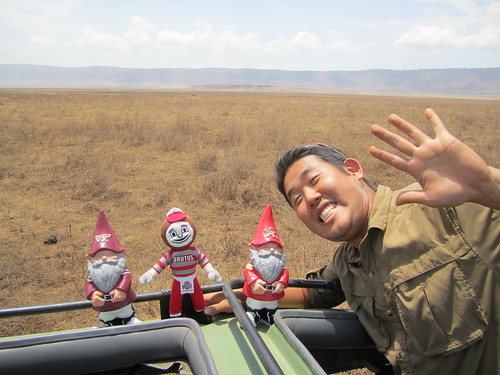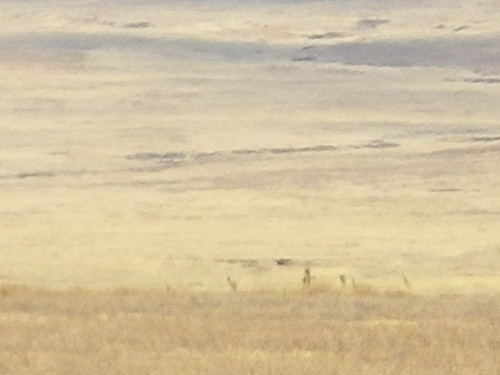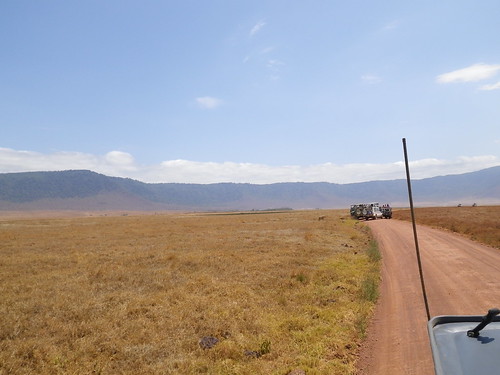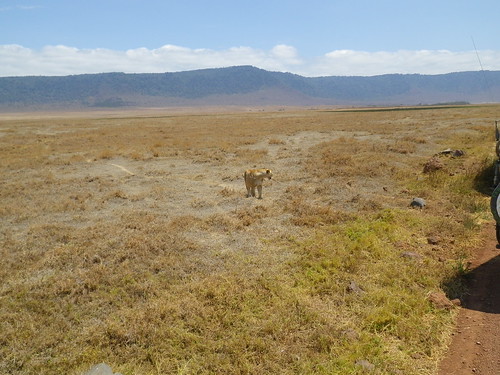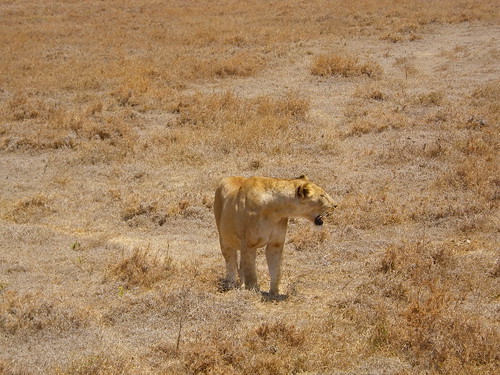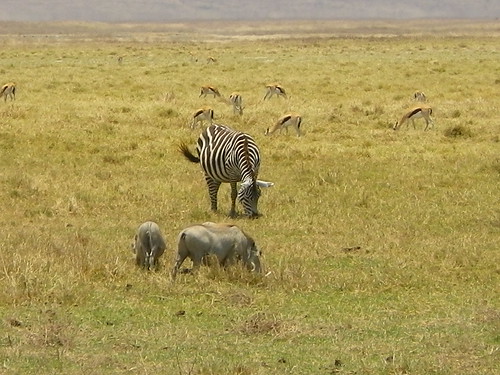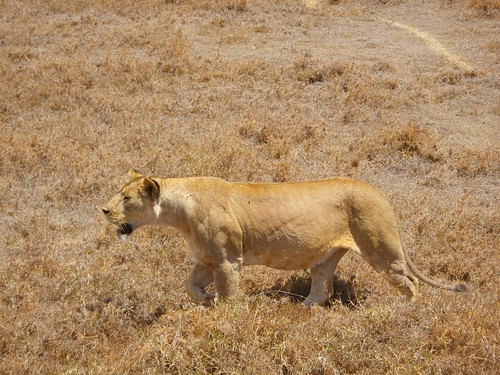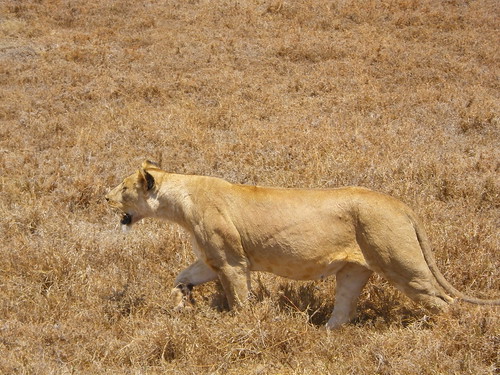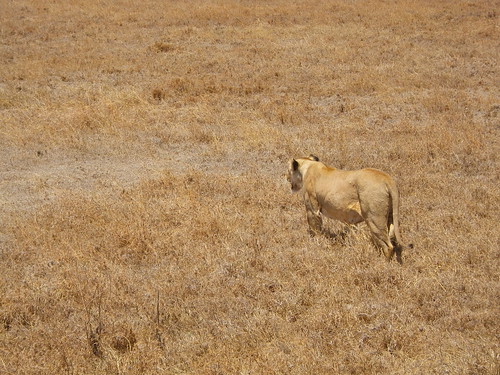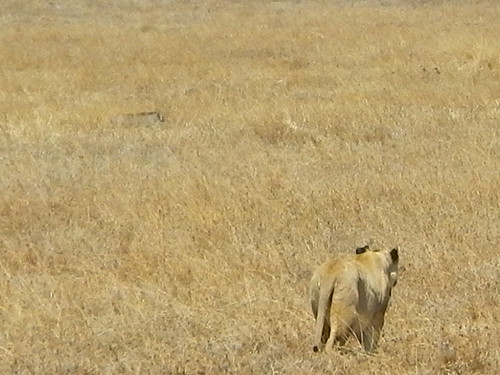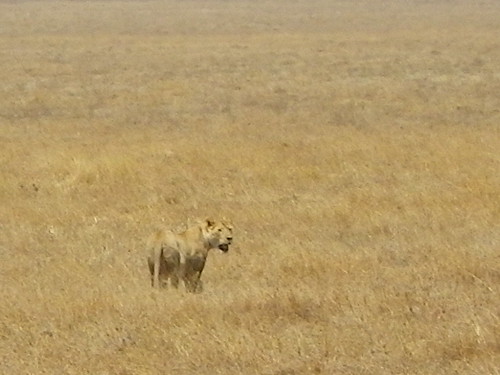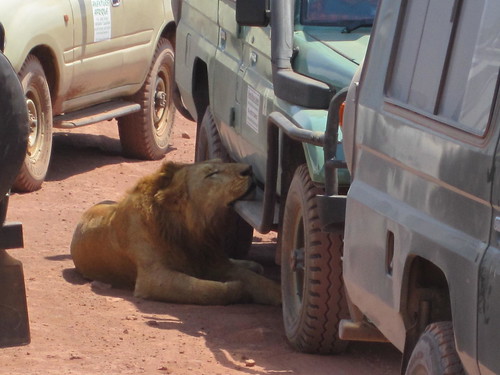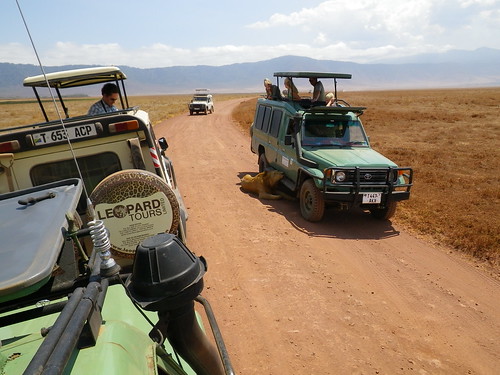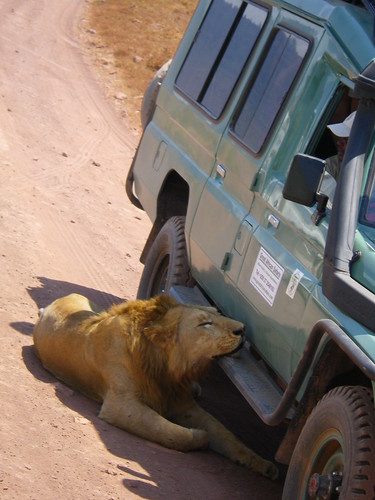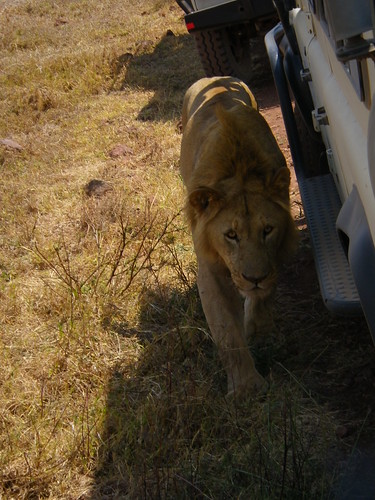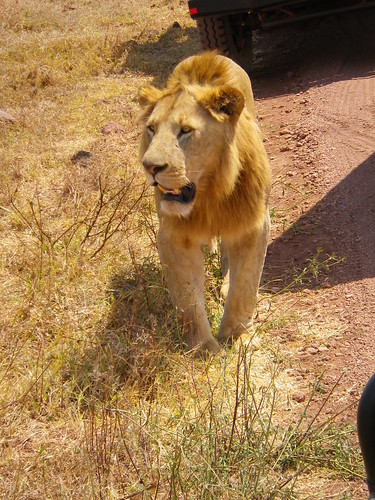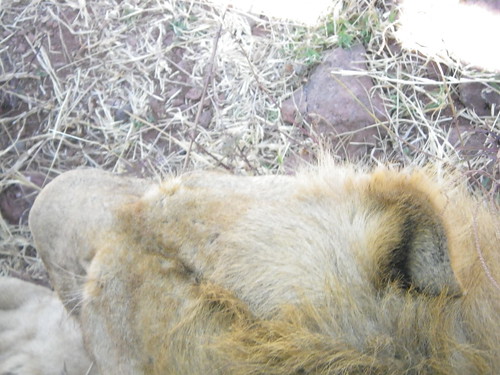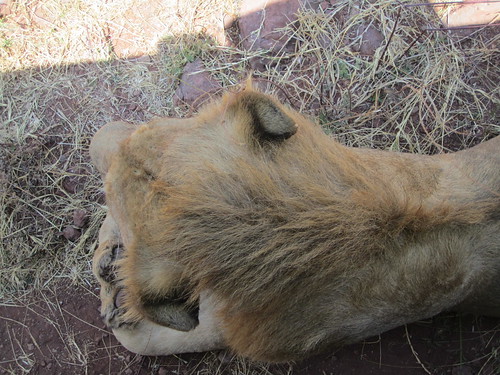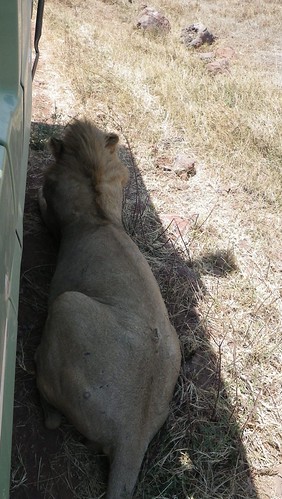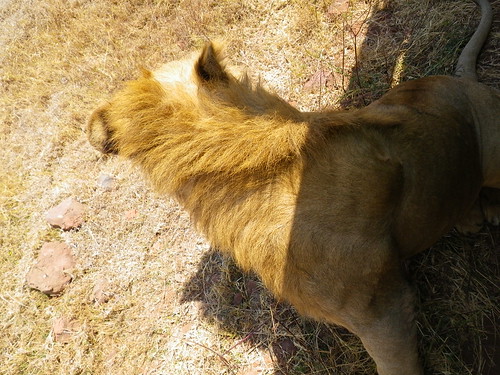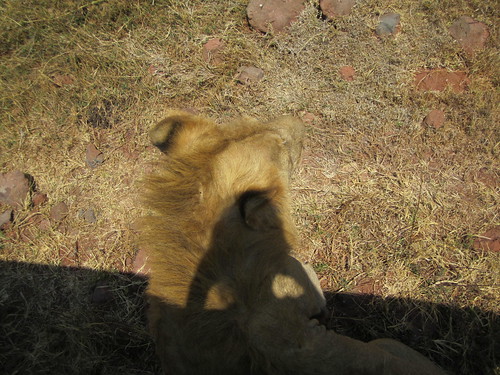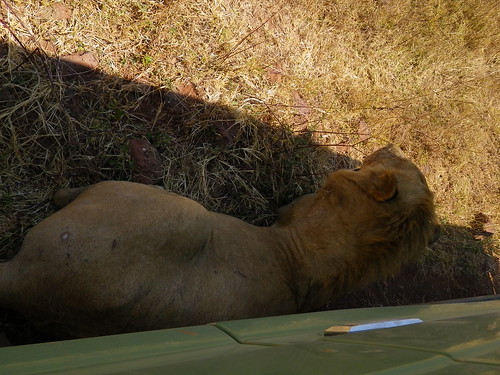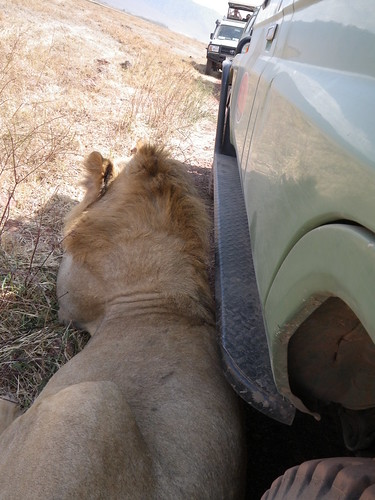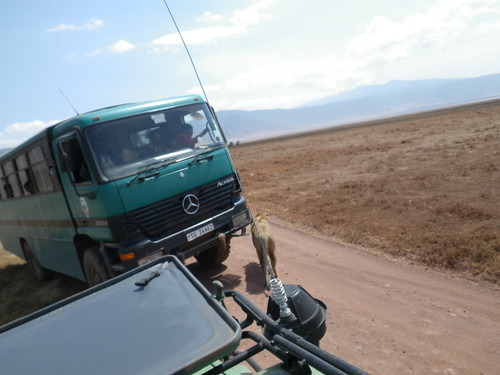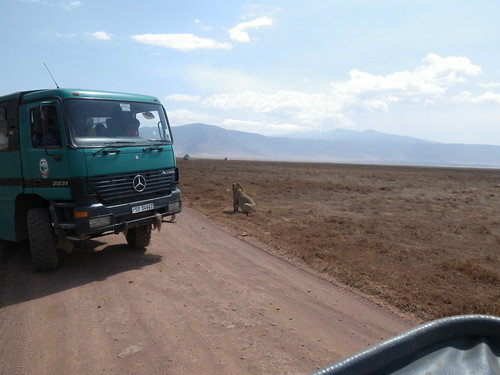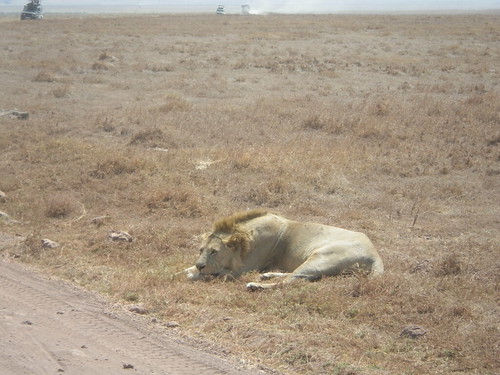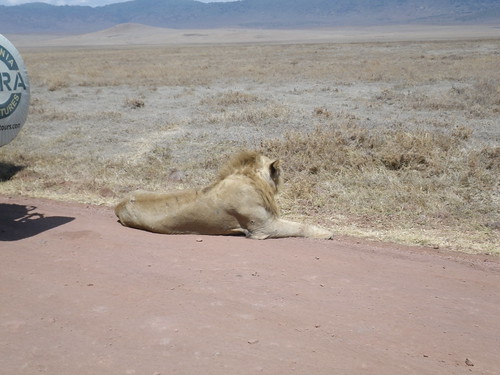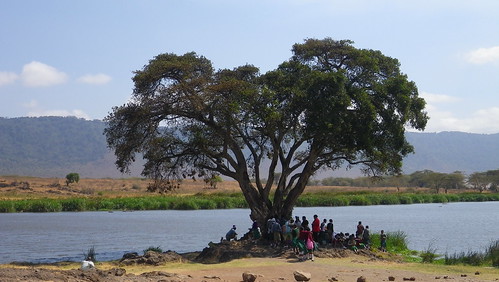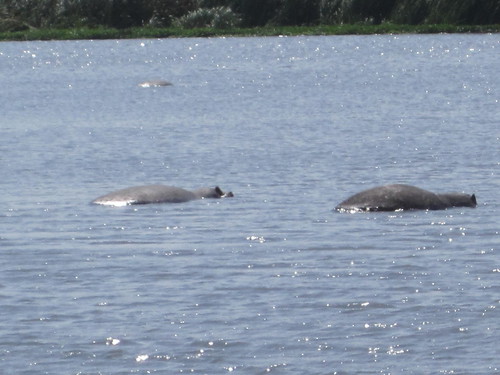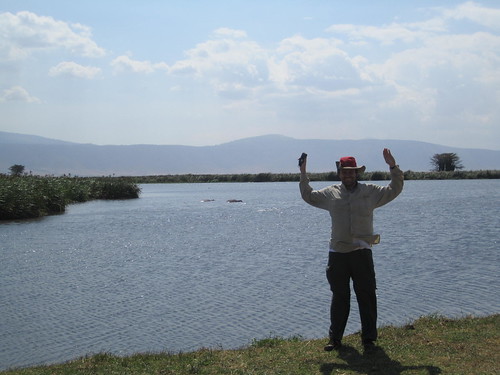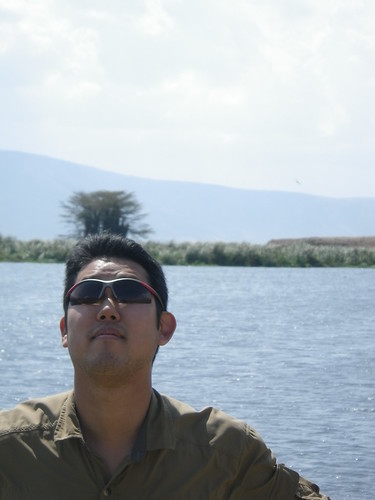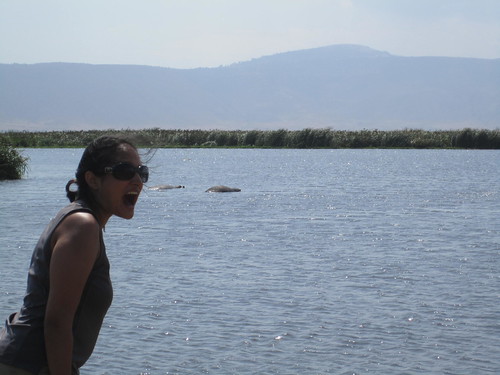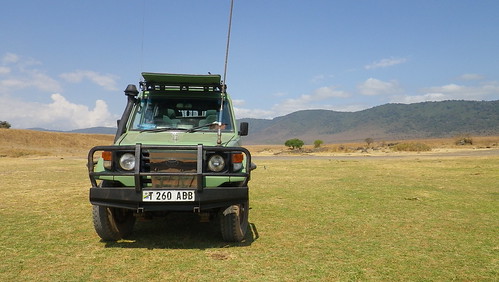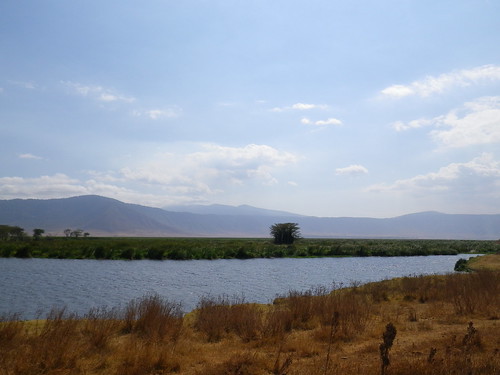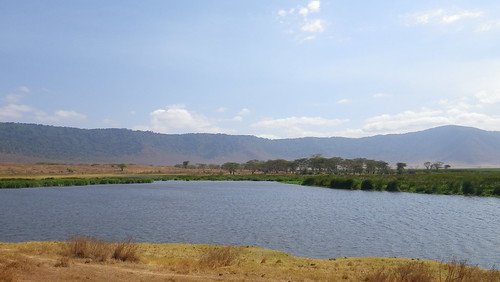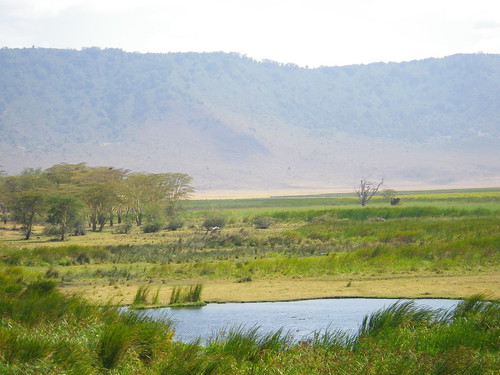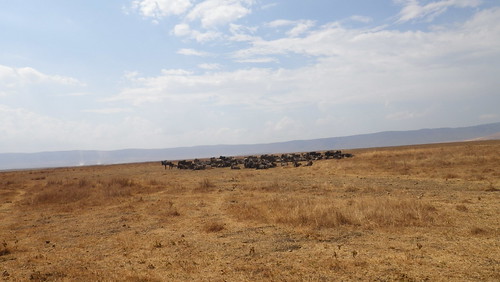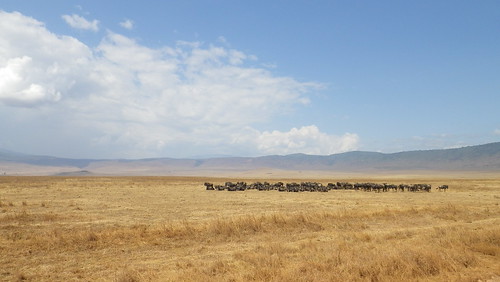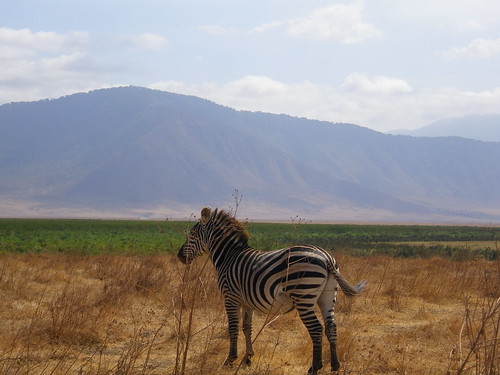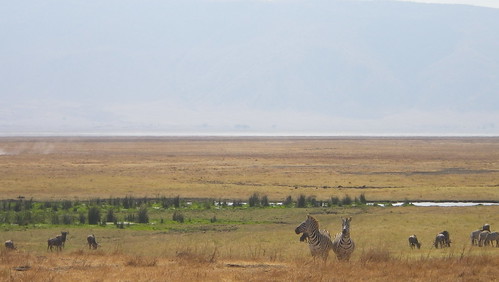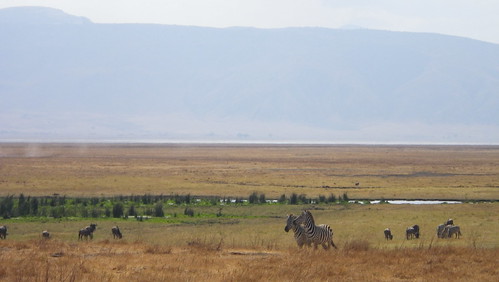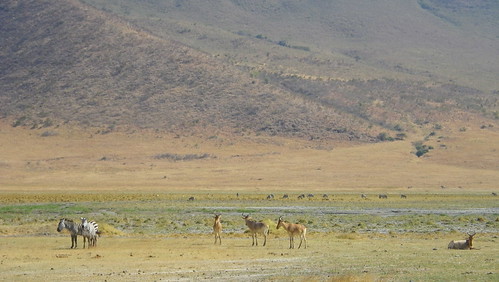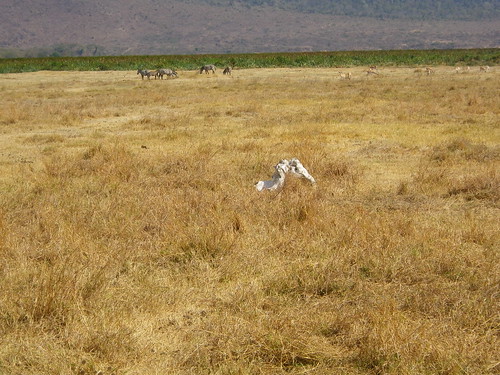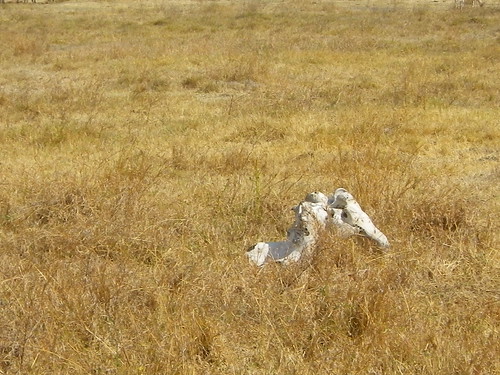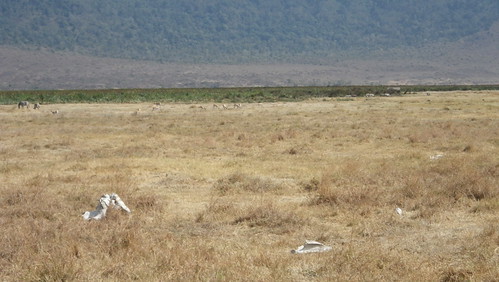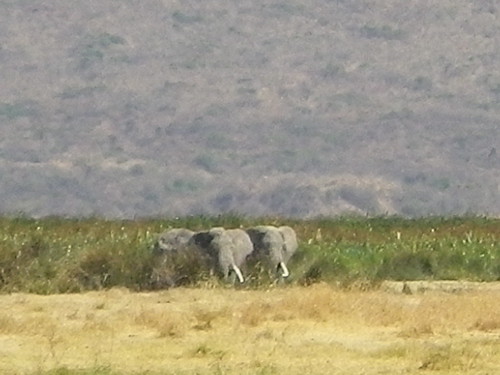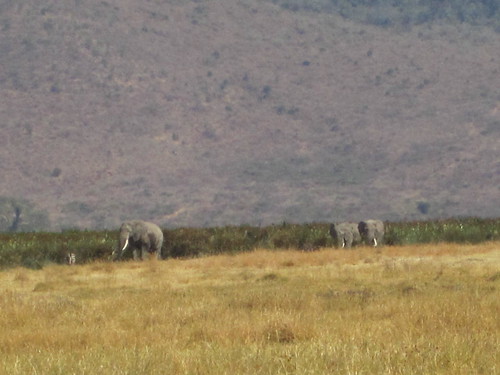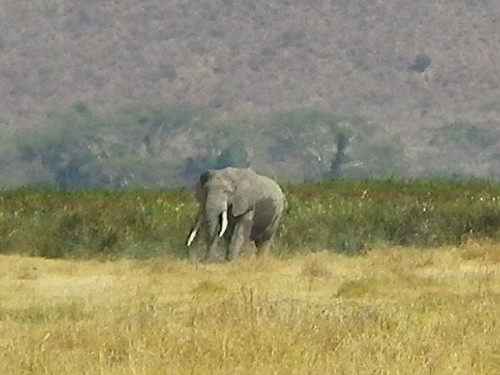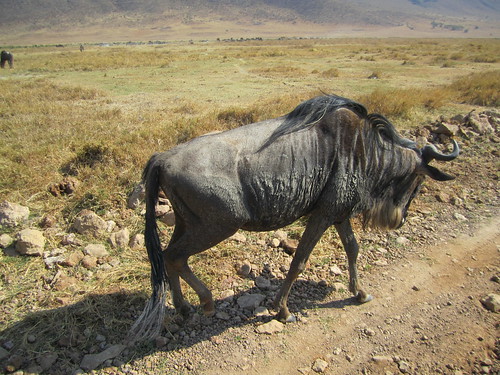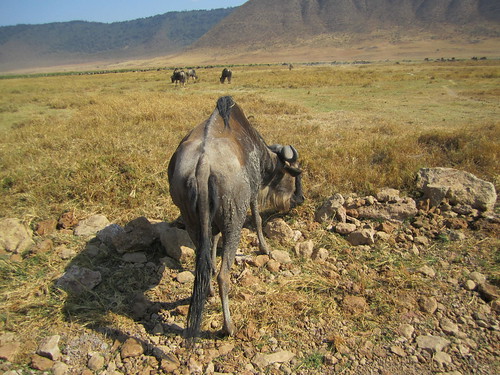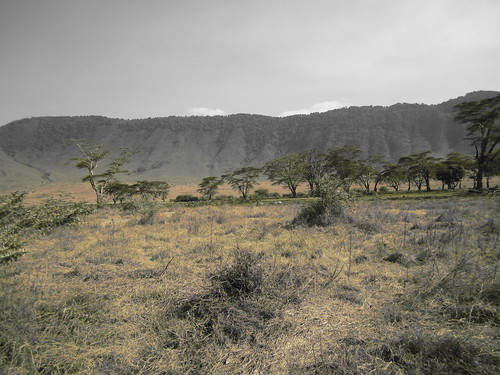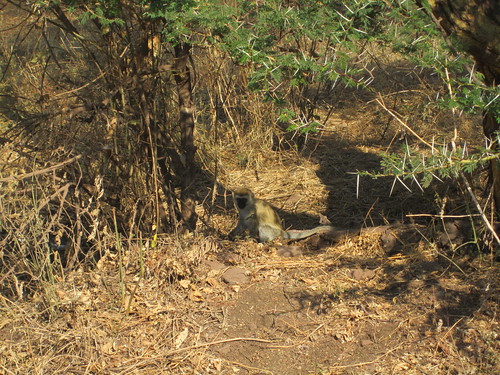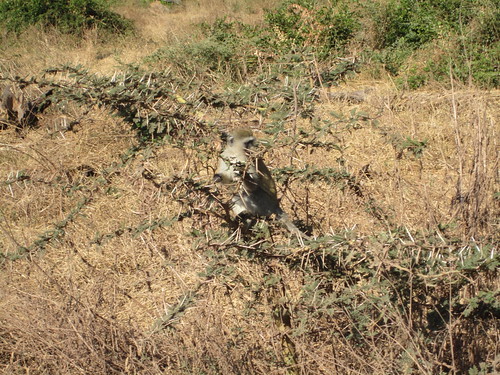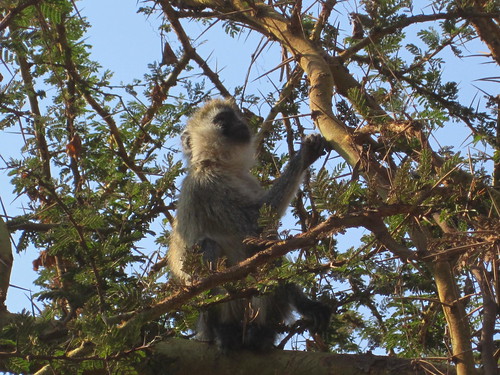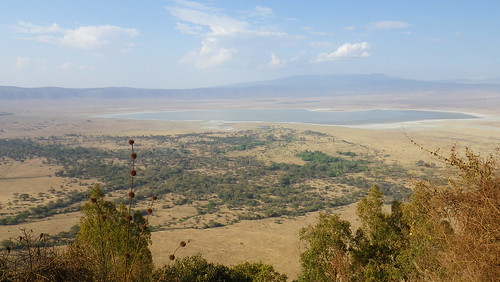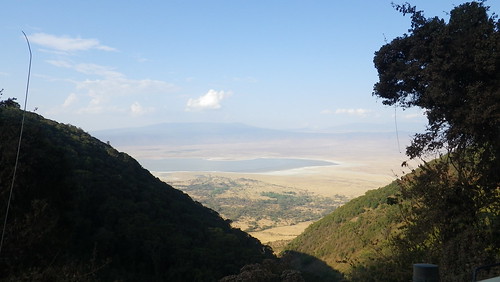... just the animals.
This is a weekly blog of a journey I took to Tanzania and Dubai in November of 2010. I will usually post updates on Monday or Tuesday of a given week.
So, without further ado...
... pictured above are panoramas of the smaller
hippo pool on a side of the crater.
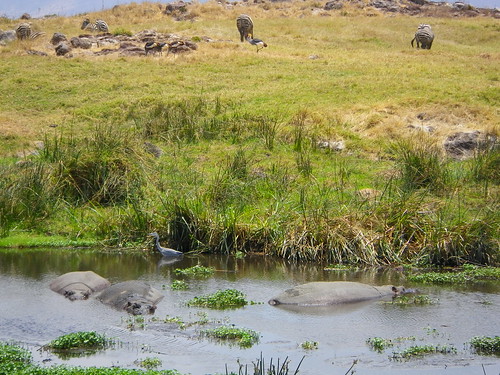
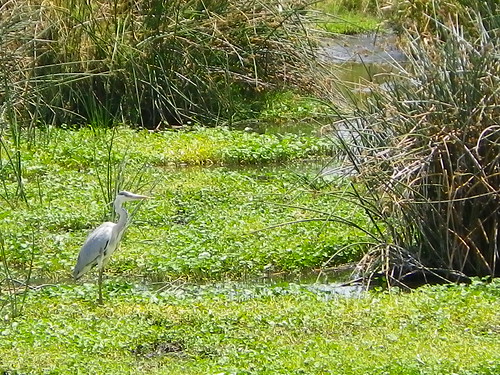
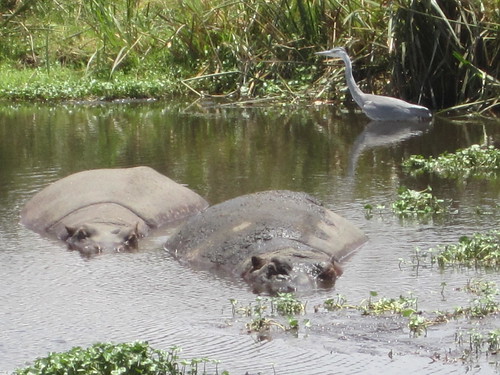
Here are a closer view of the hippos with
grey herons...
... and here is a closer view of the location of the hippo pool in relation to everything else. The pictures above are from the smaller pool on the middle left of the crater just above and to the left of the big pool.
You can just make out an ascending road behind the hippo pool. David said that was a route that used to be used by poachers.
... and a hyena waiting for prey.
This is a
black rhino. It was pretty awesome we saw this rhino, because David said there are only four total in the crater. Of all of the animals that were poached, the black rhino was one of the ones that came closest to being extinct. They were hunted for their horn, which is used in the Middle East as an aphrodisiac. Now, "the picture is blurry" you say. Why yes, yes it is. It is, however, the best of about 30 photos we took of the rhino. How is this possible?
That little dark spot you see in the brush behind the gnomes and Brutus (and me) is the black rhino. So, considering that, the pictures didn't turn out that bad...
... which is why when we saw this pride of lions, we thought that may be as close as we would get to the lions as well.
Luckily, we saw this group of cars in the distance, which meant that excitement was nearby! And excitement it was.
Lions! This particular lion is a female. Contrary to what we thought before, David said lions are extremely lazy on a whole host of horizons. In a pride, the females do all the hunting, so this female is looking for prey...
... which she spotted at this moment...
... a family of warthogs. Okay, this wasn't the exact family of warthogs, as the brush was too tall to get a good picture of them, but it was pretty close, with what looked like a mom, dad, and baby warthog trotting on by to our left.
At that point, the female lion started moving toward the warthogs. At first, I was a bit curious why because the warthog family was moving away from the lion, but then they suddenly turned around and started coming back to the right. So obviously, the lion had sensed something. Sixth sense indeed.
At this point, David got very excited, because the awesomest thing to see on a safari is a kill, and he thought the lion had taken a good angle to intercept the warthog family. So we got excited as well.
Unfortunately, it was not to be, as the warthog family's geometry skills were superior to both ours and the lion's. So they trotted past the lion with only ten feet separating them, in a seeming taunt. While we were disappointed in not seeing a kill, inside, I was kind of happy to see the little guy win for once in the animal kingdom. I asked David why the lion didn't accelerate at the end to cover the gap, and he again said that lions are lazy, particularly during the day when the sun is up and it is hot.
The lion realizes the jig is up, and ends pursuit...
... and looks back to the pride, seemingly saying "sorry I lost dinner guys. My bad." And to who was she reporting exactly?
This guy.
Back to the laziness of lions, in an observation that should hearten feminists everywhere, David says that as lazy as female lions are, male lions are even worse. But it's a laziness in knowing that you are the man, because you had to battle off other male lions in order to take charge of the pride. It's kind of like the male lion is a jock, and the female lions are the cheerleaders catering to his every need. He is clearly the alpha... just a most-of-the-time lazy alpha. David said he is looking for shade, and he seems to have found it.
Please note the Leopard Tour vehicle. It will make future appearances.
The lion was sleeping on the footstep of a vehicle carrying what I think was a Swedish family. The driver was very annoyed, while the kids in the family were scared s***less, as they tried to climb as high up on the vehicle as possible to get away from the lion.
Eventually, he got up, probably when the female lion roared back that she had lost dinner.
He looks at the safari driver, who is yelling (yes, YELLING) at the lion to go away...
... and so he apparently thinks to himself "I don't need this crap," and gets up to leave. At this point, the kids in the vehicle are going bananas with fright, and then the vehicle drives away. Which is when...
... he wanders...
... over to me....
... and sits below my window in the front seat. The above pictures are taken without any zoom, and yes, he is as close as he appears. Now, at this point, my window is rolled down because I had been taking pictures. Well, David starts to get a little nervous, so he asks me to roll it up. Unfortunately, some combination of the engine being off and the car being at the wrong angle prevents this, so David suggest I move to one of the back seats. I agree.
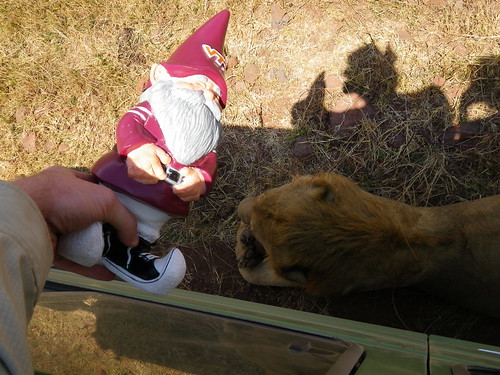
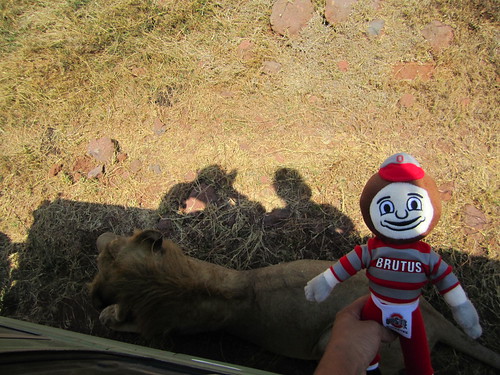
After taking some pictures with the mascots, David decides we should go, but obviously we can't go with the lion next to us. So, he begins to play some music to get the lion's attention. But not just any music. You see, David had purchased a Swahili CD back in the town of
Mto Wa Mbu before we entered Lake Manyara National Park with what he termed "safari" music. On the cover is a Swahili man dressed in lion skin clothes sitting on a water-starved grassy plain, and the music is heavy on drums. What one of the songs also has is a lion roaring. So, David turns up the volume and blasts the sounds of a FREAKING LION ROARING through the car's speakers.
Unsurprisingly, this piques his interest, and the lion begins to turn around...
... until he is nows settled in the opposite direction with his ears directly next to the speakers, presumably so he can hear his "brethern" better. And to boot, he is now actually sitting against the vehicle. Great plan David.
At this point, we don't really know what to do. So, after taking some more pictures of Charles (because he is in CHARGE... get it? Get it? Har har har! I kill me) we do what any normal person would do. We eat lunch. Which is when we took this video.
I asked David if lions like chickens, as that was one of the things in our lunch. Luckily, he said they did not. But I guess it probably would have been too late by then anyways.
Anyways, apparently Charles got bored with us after awhile, about the time when this bus full of kids rolled up. So he wandered over there. The kids were really excited to see the lion... the lady bus driver not as much.
Charles seemed to sense this, so he set up on the side of the road.
And so ended the saga of Charles.
I like to think he was holding back tears because he couldn't bear to watch us go.
We ran into the bus and kids at our only pit stop on the banks of the main crater lake. They were sitting under this awesome tree eating lunch.
Yes, it's the big blue spot in the middle.
The lake was pristine and serene. It was definitely a lot deeper than the hippo pools, as you can make out a few hippos on the left, but none on the right
Our wheels.
Views from other sides of the lake.
A arse-load of wildebeests.
A noble steed.
Animals on the floodplain.
This is an elephant graveyard. David said that, for some reason, elephants come to this area to die.
Indeed, he thinks one of these "loser" males (as they are in a male-only herd), who are very, very big, and very, very old, are next.
Wildebeest unplugged.
David said European settlers used to live in this area because it afford some shade and shelter, but that they kept dying due to malaria.
Hey, hey, we're the monkees...
... and some final views and a final panorama as we ascended the crater wall.
Ngorongoro, we hardly knew ya...

